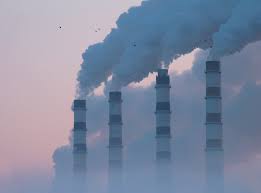

The International Agency for Research on Cancer (IARC), the specialised agency of the World Health Organisation, on Thursday announced that it had classified outdoor air pollution as carcinogenic to humans. This is the first time that experts have done so and claimed there is sufficient evidence to prove it.
After thoroughly reviewing the scientific literature, the experts convened by the IARC Monographs Programme concluded that there is sufficient evidence that exposure causes lung cancer. They also noted a positive association with an increased risk of bladder cancer.

Particulate matter, a major component of outdoor air pollution, was uated separately and was also classified as carcinogenic. The predominant sources of the pollution are transportation, stationary power generation, industrial and agricultural emissions, and residential heating and cooking. Some pollutants have natural sources as well.
Spurt in lung cancer
The IARC uation showed an increasing risk of lung cancer with increasing levels of exposure to particulate matter and air pollution. Though the composition of air pollution and levels of exposure can vary dramatically between locations, the conclusions of the Working Group apply to all regions of the world.

Air pollution is already known to increase risks for a wide range of diseases such as respiratory and heart diseases. Studies indicate that in recent years exposure levels had increased significantly in some parts of the world, particularly in rapidly industrialising countries with large populations. The most recent data indicate that in 2010, 223000 deaths from lung cancer worldwide resulted from air pollution.
The air we breathe has become polluted with a mixture of cancer-causing substances, says Dr. Kurt Straif, Head of the IARC Monographs Section. We now know that outdoor air pollution is not only a major risk to health in general, but also a leading environmental cause of cancer deaths.
The IARC Monographs Programme, dubbed the encyclopaedia of carcinogens, provides an authoritative source of scientific evidence on cancer-causing substances and exposures. In the past, the Programme uated many individual chemicals and specific mixtures that occur in outdoor air pollution. These included diesel engine exhaust, solvents, metals, and dusts.
Our task was to uate the air everyone breathes rather than focus on specific air pollutants, says Dr. Dana Loomis, Deputy Head of the Monographs Section. The results from the reviewed studies point in the same direction: the risk of developing lung cancer is significantly increased in people exposed to air pollution.
The conclusion is based on the independent review of more than 1000 scientific papers from studies on five continents. The reviewed studies analyse the carcinogenicity of various pollutants, especially particulate matter and transportation-related pollution. The uation is driven by findings from large epidemiologic studies that included millions of people living in Europe, North and South America, and Asia.
Be a part of Elets Collaborative Initiatives. Join Us for Upcoming Events and explore business opportunities. Like us on Facebook , connect with us on LinkedIn and follow us on Twitter , Instagram.












